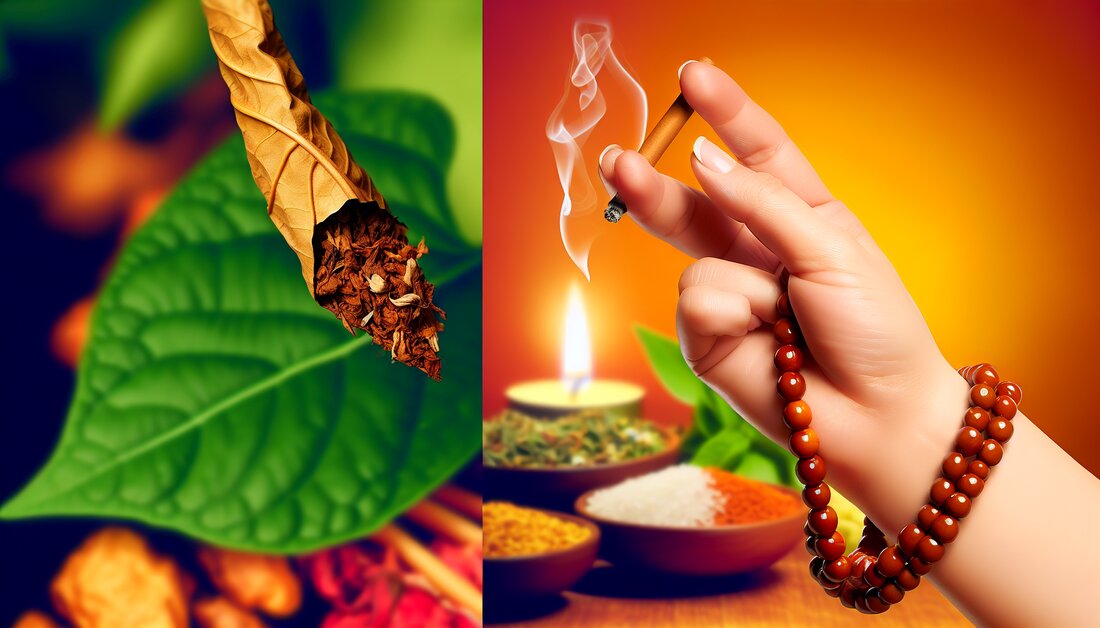India's Ancient Healing Art: Alternative Ways to Quitting Tobacco Discovered
In India, ancient healing methods could promote tobacco cessation. A study shows that there is a lot of potential for CAM among smokers and in rural areas. More research and education are needed!

India's Ancient Healing Art: Alternative Ways to Quitting Tobacco Discovered
There are nearly 267 million adult tobacco users in India and the number of those quitting smoking is slowly increasing. A variety of methods for quitting are known, such as counseling, nicotine replacement therapy, nicotine patches or chewing gum, and prescription medications. Another option for quitting smoking could be the use of complementary and alternative medicine (CAM). This has a millennia-old tradition in India, but there have been few studies examining the extent to which CAM is used by tobacco users trying to quit smoking.
The present study analyzes the potential of CAM as a tobacco control strategy in India. Data from two rounds of the Global Adult Tobacco Survey (GATS 2009 and 2016) were evaluated. In particular, the extent to which traditional medicine is used as a method for smoking cessation among smokers, users of smokeless tobacco and users of both forms was examined.
The results show that the general prevalence of traditional medicine use among GATS-1 respondents was highest among dual users (4%) and GATS-2 was highest among smokers (3%). In both surveys, traditional medicine use was found to be more common among men, residents of rural areas, those with no education or less than basic education, and in the eastern region of India.
Future practices may change to include greater integration of CAM into tobacco cessation programs. However, this requires the pharmacopoeia to be standardized and clinical evidence to be created. Targeted educational work and capacity building for medical professionals is also required. There is also a need for research and collaboration between academic and industrial institutions on traditional Indian medical disciplines such as Ayurveda, Yoga, Naturopathy, Unani, Siddha and Homeopathy (AYUSH systems).
Basic terms and concepts:
- Komplementär- und Alternativmedizin (KAM): Bezieht sich auf eine Gruppe vielfältiger medizinischer und gesundheitsbezogener Systeme, Verfahren und Produkte, die derzeit nicht als Teil der konventionellen Medizin angesehen werden.
- GATS (Global Adult Tobacco Survey): Eine repräsentative Umfrage, die den Tabakkonsum bei Erwachsenen und seine Auswirkungen auf die Gesundheit auf globaler Ebene untersucht.
- Pharmakopöe: Ein offiziell anerkanntes Handbuch, das Standards zur Qualität, Reinheit, Kennzeichnung und Dosierung von Medikamenten enthält.
- AYUSH: Ein System, das die traditionellen indischen Medizinrichtungen Ayurveda, Yoga, Naturheilkunde, Unani, Siddha und Homöopathie umfasst.
Abbreviations used:
- KAM: Komplementär- und Alternativmedizin
- GATS: Global Adult Tobacco Survey
- AYUSH: Ayurveda, Yoga, Naturheilkunde, Unani, Siddha, Homöopathie
The role of complementary and alternative medicine (CAM) in tobacco cessation in India
This study examines the potential role of complementary and alternative medicine (CAM) as a tobacco control strategy in India. With nearly 267 million adult tobacco users and a slowly increasing quit rate, India faces major challenges. While traditional cessation approaches such as counseling and nicotine replacement therapies are well established, there is little research on the effectiveness of CAM in this area.
Material and methods
The research is based on a secondary analysis of data from both rounds of the Global Adult Tobacco Survey (GATS 2009 and 2016). The dependent variable in the analysis was the use of traditional medicine as a tobacco cessation method, assessed in three user categories: smokers, smokeless tobacco users, and mixed users. The prevalence of CAM use was determined and the chi-square test was used to identify factors significantly associated with CAM use among tobacco users based on a significance level of 0.05.
Results
| GATS-1 | GATS-2 | |
|---|---|---|
| Smoker | N/A | 3% CAM usage |
| Smokeless tobacco | N/A | N/A |
| Mixed consumers | 4% CAM usage | N/A |
The analysis showed that in GATS-1 traditional medicine was used more among mixed users (4%), while in GATS-2 it was used most often among smokers (3%). In both survey rounds, the use of traditional medicine was higher among men, in rural areas, among those uneducated or with less than primary education, and in the eastern region.
Conclusions
CAM shows promising potential to support tobacco cessation efforts, provided systematic measures are taken to standardize the pharmacopoeia and establish robust clinical evidence. There is a need for increased awareness, capacity building of healthcare providers and promotion of academic-industrial research in the AYUSH (Ayurveda, Yoga, Naturopathy, Unani, Siddha and Homeopathy) systems.
Quote:Further details about the study can be found at: https://pubmed.ncbi.nlm.nih.gov/38425957.

 Suche
Suche
 Mein Konto
Mein Konto
